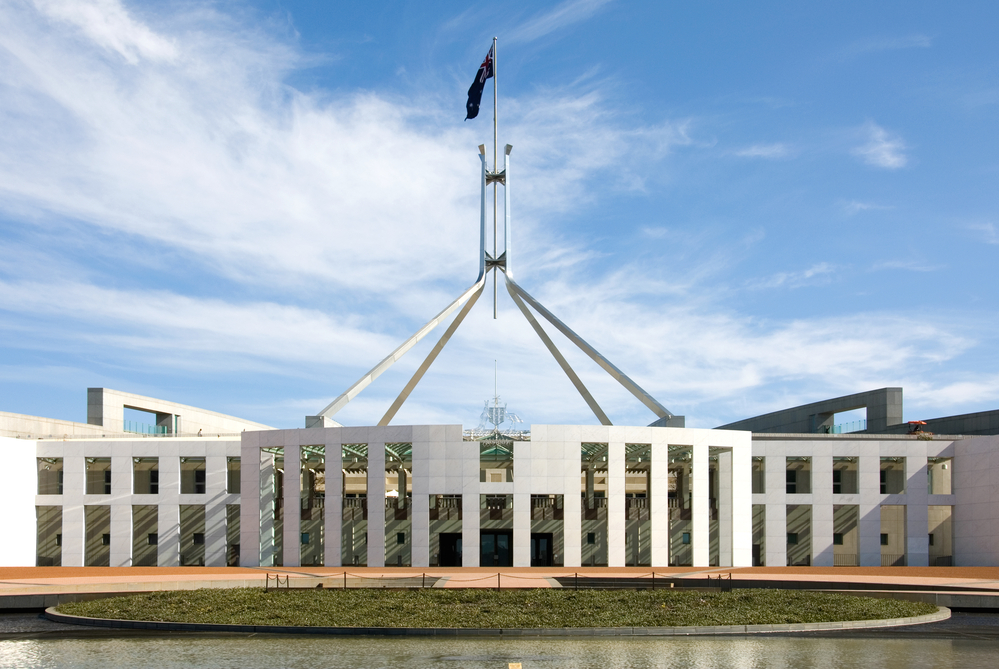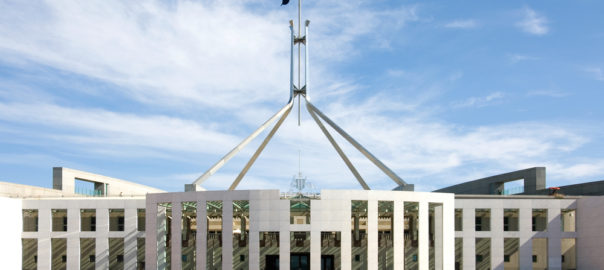
Following on from an already unprecedented Government response to the Australian bushfires and the COVID-19 pandemic in 2020, which saw just over $300 billion in announced economic relief, Treasurer Josh Frydenberg has announced the next phase of support included in the 2020-2021 Australian Budget.
Relief measures throughout 2020 have sent Australia into a projected $213.7 billion deficit, with the nation’s debt level expected to reach $1.1 trillion within four years. Due to the unprecedented events this year, the Government’s focus with the budget has shifted from delivering the long-awaited budget surplus to stimulating the economy and fostering recovery from Australia’s first recession since 1991, and will likely remain this way for the near future with the ultimate goal of keeping the unemployment rate below 6%. Despite this, the Government holds an optimistic view on the road to Australia’s economic recovery, forecasting activity to pick up strongly in late 2020 and early 2021.
The key take-outs from this year’s Budget include:
- Bringing forward personal income tax cuts that were scheduled to begin in 2022, designed to provide an estimated $17.8 billion in additional relief.
- Initiatives to spur business investment and spending, including temporary full expensing of investment, the temporary introduction of tax loss offsets against previous years, and a series of tax concessions for small to medium businesses.
- Incentives for employers to take on new apprentices and trainees through wage subsidy programs, with the goal of creating more jobs and assisting those displaced by COVID-19.
- Commitments to infrastructure spending over the next 10 years, with additional spending allocated to the decade-long infrastructure pipeline.
- Super reforms designed to help members pay less in fees and reduce the number of unnecessary extra accounts, as well as extra accountability for super funds performing poorly.
- Additional support payments for welfare recipients.
JBS Views & Planning Opportunities
We feel the some of the changes in the budget helps reiterate the importance of obtaining ongoing advice and continuing to review your situation to ensure that you are structured appropriately and are positioned well for the future. Particularly with the income tax cuts, these may increase your surplus income and this may present an opportune time to decide how best to allocate these additional funds.
On a positive note, there are no significant changes to superannuation, providing certainty to pre-retirement and retirement planning strategies.
As in the past please remember all measures outlined in this newsletter are proposals only, each of the proposals must still pass Parliament before they’re legislated.
Tax Changes
Personal Income Tax Cuts – from 1 July 2020
The Government announced that Stage 2 of the tax cuts outlined in last year’s budget will be brought forward by two years, leading to the following changes that will be backdated from 1 July 2020:
- The top end of the 19.0% tax rate threshold will increase from $37,000 to $45,000.
- The top end of the 32.5% tax rate threshold will increase from $90,000 to $120,000.
- The low-income tax offset (LITO) will increase from $445 to $700.
- The low- and middle-income tax offset (LMITO) will remain at $1,080 and will remain in place for an extra year.
This initiative will provide an additional $17.8 billion in relief to support economic recovery. Below is an illustration of the estimated tax savings targeted to low- to middle-income earners:

Stage 3 of this tax cut plan will keep its effective date of 1 July 2024. At this stage, the 37% tax rate will be abolished, and the 32.5% tax rate will reduce to 30% for those earning between $45,000 and $200,000.
JBS View:
We welcome this bring-forward of the tax cuts as it keeps more money in our clients hands, we also view it as a positive step towards help reinvigorate the economy, although that is contingent on people spending the extra tax savings they receive, whilst many will pay off debt.
Business Changes
The Government has announced a series of temporary tax relief measures for businesses, aimed at reducing tax and red tape and optimising cash flow to encourage growth.
Business Tax Cuts – from 6 October 2020
Eligible businesses will be able to deduct the full cost of eligible capital assets first used or installed by 30 June 2022. This includes full expensing on the cost of new depreciable assets and the associated costs of improvement for businesses with an annual turnover of less than $5 billion, and full expensing on the cost of second-hand assets for businesses with an annual turnover of less than $50 million.
Temporary Loss Carry-Back
Eligible businesses will temporarily be able to carry losses incurred from FY20, FY21 and FY22 backwards to previously taxed profits from FY19 onwards, to receive a tax refund upon lodging their FY21 and FY22 tax returns. Companies will be able to carry losses forward as per usual.
Tax Concessions
Eligible businesses will have access to up to ten small business tax concessions in three phases, and the turnover threshold for eligible businesses has increased from $10 million to $50 million. These three phases are:
- From 1 July 2020, eligible businesses will be able to immediately deduct certain start-up expenses and prepaid expenditure.
- From 1 April 2021, eligible businesses will be exempt from the 47% fringe benefits tax on car parking and multiple work-related portable electronic devices provided to employees (i.e. phones and laptops).
- From 1 July 2021, eligible businesses will be able to:
- Access simplified trading stock rules
- Remit PAYG instalments based on GDP-adjusted notional tax
- Settle excise duty and excise-equivalent customs duty monthly on eligible goods under the small business entity concession
- Have a two-year amendment period apply to income tax assessments for income years starting from this date.
JBS View:
With any deduction, it is important to remember that it’s a deduction, not free money. While a wider range of businesses can now get an immediate deduction for an asset purchase, business owners should not go out and spend the money unless the asset is required. The asset should be the focus with the extra benefit being the tax deduction. The loss carry-back measure will allow businesses to generate cash refunds using earlier losses to provide a cash flow boost, although it appears that the earliest this can be received is after lodging the FY21 tax return.
Superannuation Changes
Super ‘Stapling’
This measure will effectively mean that an employer must pay super to a new employee’s existing super account, rather than the employer’s default super fund. This will effectively tie an existing super account to an employee should that employee start a new job and is designed to reduce the number of unintended multiple accounts being created with balances that easily erode due to unnecessary fees.
Underperforming Funds
Super funds will now be required to meet annual performance tests, with underperforming funds to be penalised by not being allowed to take on new members until performance improves.
Previous Changes Deferred
The Government has announced deferrals on the following previous proposals relating to super:
- The proposal to increase the maximum allowable members in a self-managed super fund and small APRA fund from four to six has received Royal Assent.
- The proposal to remove the capital gains discount for Managed Investment Trusts and Attribution Managed Investment Trusts has been revised to 3 months after Royal Assent.
- The proposal to reduce red tape for superannuation funds has been deferred to 1 July 2021.
- The proposal to start the Retirement Income Covenant has been deferred to 1 July 2022.
JBS View:
We welcome any positive changes to the Superannuation rules, especially when it comes to working to reduce fees on clients’ accounts, which should help reduce the likelihood of fees eroding retirement savings. The greater transparency will also allow you to make informed decisions regarding Super and what you’re invested in.
Jobs Initiatives
JobMaker Hiring Credit – from 7 October 2020
The Government has proposed to pay a hiring credit for up to 12 months to employers who take on new young workers. A credit will be paid for each new employee that works a minimum of 20 hours per week, provided he/she received the JobSeeker Payment, Youth Allowance or Parenting Payment for at least one month prior to being hired. This credit will be $200 per week for each new employee aged between 16 and 29, and $100 per week for each new employee aged between 30 and 35, paid quarterly in arrears. This initiative is estimated to support around 450,000 jobs and will be valid for three years.
Apprenticeships Wage Subsidy – from 5 October
Businesses of any size who take on new apprentices or trainees between 5 October 2020 and 30 September 2021 will be able to claim the new Boosting Apprentices Wage Subsidy. Under this subsidy, businesses will be reimbursed up to 50% of an apprentice or trainee’s wage worth up to $7,000 per quarter. This subsidy will be capped at 100,000 places and is designed to support school leavers and workers displaced by COVID-19 related disruption.
JBS View:
We welcome these changes as the Government is focusing on getting people back to work after record job losses this year as a result of COVID-19, which in turn will help aid our economy in the recovery post-COVID.
Social Security & Health
Economic Support Payments – from December 2020
The Government is providing two separate one-off Economic Support Payments of $250 to those receiving:
- Age Pension
- Carer Allowance
- Carer Payment
- Commonwealth Seniors Health Card
- Disability Support Pension
- Double Orphan Pension
- DVA Gold Card
- DVA Payments
- DVA Seniors Card
- Family Tax Benefit
- Pensioner Concession Card (PCC) holders
Individuals eligible for the Coronavirus Supplement of $250 per fortnight, such as those receiving the JobSeeker payment, are not eligible for the one-off $250 Economic Support Payment.
Aged Care
The Government has committed to an additional $746.3 million in funding the aged care sector, including funding for 23,000 additional home care packages across all levels, which is designed to improve waiting times. Additionally, the Government has proposed one unified system for classifying the care needs of older Australians, which should provide an improvement to navigating the aged care system.
JBS View:
JBS understands the impact Aged Care has on client’s financial situations and the importance of having flexibility on whether you have in-home care or via an Aged Care facility. We welcome the additional funding and home care packages, and the choices this provides to those utilising the services.
Other Initiatives
Infrastructure Initiatives
Long Term Plans
The Government has committed an additional $10 billion to the 10-year transport infrastructure pipeline, which is estimated to be supporting 100,000 jobs on worksites already. This pipeline includes the planned Melbourne to Brisbane Inland Rail and the Western Sydney International Airport. Additionally, the Government has set $2 billion aside for water infrastructure projects, including dams and pipelines.
Shovel-Ready Projects
The Government is committing an additional $3 billion to shovel ready projects, which includes an extra $2 billion for road safety upgrades as well as an additional $1 billion for councils to upgrade roads and footpaths. These funds are provided on a “use it or lose it” basis, whereby unused funds will be redeployed to states and territories that have successfully used their funds. This is designed to speed up projects and bring forward project spending to the short-term.
Health Initiatives
COVID-19 Vaccine Expenditure
The Government has committed to providing $1.7 billion to secure access to over 84.8 million doses of potential vaccines developed by the University of Oxford and the University of Queensland, with $24.7 million to ensure enough syringes to deliver shots when they available. This comes on top of $6 million that has been provided in funding to support research and development of COVID-19 vaccines at Australian universities.
Mental Health
The Government has responded to the mental health impacts of the COVID-19 pandemic, with an additional $148 million in funding for mental health support provided. This includes the increase in Medicare-funded psychology sessions from 10 to 20.

 2020 will be the year that changed the way many people work. COVID-19 introduced both societal and organisational shifts, with businesses and their employees forced to adapt quickly to new ways of working that included work being carried out remotely and with increased flexibility.
2020 will be the year that changed the way many people work. COVID-19 introduced both societal and organisational shifts, with businesses and their employees forced to adapt quickly to new ways of working that included work being carried out remotely and with increased flexibility.






 Australians donate about
Australians donate about 
 There’s no question young people have been hit hard by the COVID-19 pandemic. From casual job losses to widespread hiring freezes, they’re on the front line. Experts fear the youth unemployment rate, which was 16.3% in July, will remain stubbornly high for years to come
There’s no question young people have been hit hard by the COVID-19 pandemic. From casual job losses to widespread hiring freezes, they’re on the front line. Experts fear the youth unemployment rate, which was 16.3% in July, will remain stubbornly high for years to come



 Mental health is something we all need to work to protect and maintain. Having the right tools and techniques in your back pocket could leave you better prepared for the tougher times and allow you to create a positive, productive environment both at work and at home.
Mental health is something we all need to work to protect and maintain. Having the right tools and techniques in your back pocket could leave you better prepared for the tougher times and allow you to create a positive, productive environment both at work and at home.
 Carrying debt into retirement is something many Aussies will face, but the good news is there are a number of things you can do now while you’ve still got time on your side and earning an income.
Carrying debt into retirement is something many Aussies will face, but the good news is there are a number of things you can do now while you’ve still got time on your side and earning an income.
 Uncertainty around COVID-19 might be increasing your stress levels about losing your job, but here are five ways to soften the financial blow.
Uncertainty around COVID-19 might be increasing your stress levels about losing your job, but here are five ways to soften the financial blow.
 In Australia, your employer is required by law to pay a minimum percentage of your eligible income to a complying superannuation fund or retirement savings account. This is known as the Superannuation Guarantee and it’s currently set to 9.5%.
In Australia, your employer is required by law to pay a minimum percentage of your eligible income to a complying superannuation fund or retirement savings account. This is known as the Superannuation Guarantee and it’s currently set to 9.5%.
 If your New Year’s resolution was to spend less time glued to your phone, you’ve probably found that unexpectedly challenging this year. While the impact of COVID-19 differs from state to state, many of us have experienced social isolation and the call to stay and work from home where possible, resulting in an increase in the amount of time we are spending online.
If your New Year’s resolution was to spend less time glued to your phone, you’ve probably found that unexpectedly challenging this year. While the impact of COVID-19 differs from state to state, many of us have experienced social isolation and the call to stay and work from home where possible, resulting in an increase in the amount of time we are spending online.
 After a year when even the best laid plans have been put on hold due to COVID-19, people who were planning to retire soon may be having second thoughts. You may be concerned about a drop in your super balance, insecure work, or an uncertain investment outlook.
After a year when even the best laid plans have been put on hold due to COVID-19, people who were planning to retire soon may be having second thoughts. You may be concerned about a drop in your super balance, insecure work, or an uncertain investment outlook.